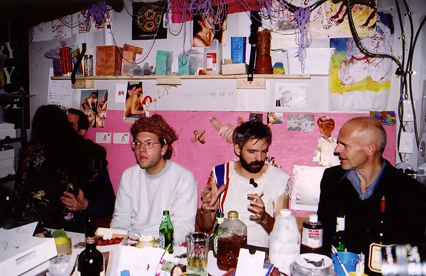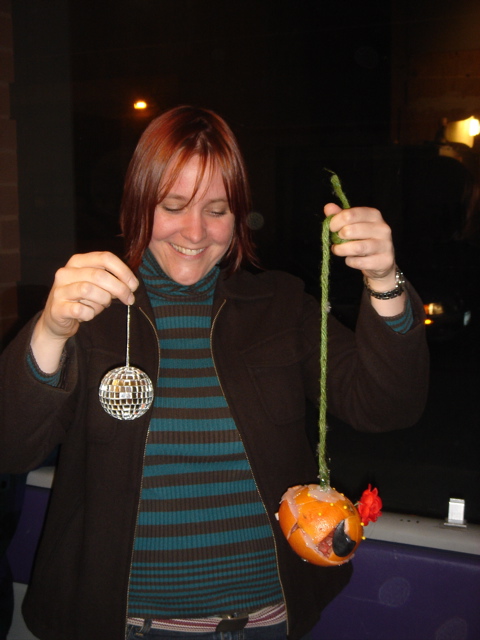central park: Shawn Jean-Louis
 Central Park is a sprawling, 840 acre piece of land in the center of the borough of Manhattan. It extends between 59th and 110th street as well as between 5th and 8th avenue. The park’s creators (William Cullen Bryant, Andrew Jackson Downing, Frederick Law Olmsted, and Calvert Vaux) pioneered the use of landscape architecture techniques in American parks. Their goal was to create a place where people could come to relax and meditate. They also wanted the park to attract a heterogeneous audience so that all kinds of people could come together and interact. Central Park has been known as one of the greatest achievements in artificial landscaping ever since it first opened in 1876. Since then, he park has surely gone through its fair share of trial and tribulations. After it was name New York City’s first scenic landmark in 1974, it was seen that the condition of the park was rapidly deteriorating. Thus, the Central Park Conservancy was founded in 1980 and drastic measures were taken to return the park’s splendor. With its varied range of vegetation and terrain Central Park is truly a thing of beauty. It consists of flat grassy swards, gentle slopes, shady glens, and steep, rocky ravines. In addition to its aesthetic value, the park also has many entertainment outlets. These outlets include a zoo, ice skating rink, an open-air theatre, athletic fields, and children’s playgrounds.
Central Park is a sprawling, 840 acre piece of land in the center of the borough of Manhattan. It extends between 59th and 110th street as well as between 5th and 8th avenue. The park’s creators (William Cullen Bryant, Andrew Jackson Downing, Frederick Law Olmsted, and Calvert Vaux) pioneered the use of landscape architecture techniques in American parks. Their goal was to create a place where people could come to relax and meditate. They also wanted the park to attract a heterogeneous audience so that all kinds of people could come together and interact. Central Park has been known as one of the greatest achievements in artificial landscaping ever since it first opened in 1876. Since then, he park has surely gone through its fair share of trial and tribulations. After it was name New York City’s first scenic landmark in 1974, it was seen that the condition of the park was rapidly deteriorating. Thus, the Central Park Conservancy was founded in 1980 and drastic measures were taken to return the park’s splendor. With its varied range of vegetation and terrain Central Park is truly a thing of beauty. It consists of flat grassy swards, gentle slopes, shady glens, and steep, rocky ravines. In addition to its aesthetic value, the park also has many entertainment outlets. These outlets include a zoo, ice skating rink, an open-air theatre, athletic fields, and children’s playgrounds.
Central Park epitomizes public art. Twenty-five million people visit the park each year to bask in everything it has to offer. It is a absolutely phenomenal piece of architecture and landscaping that is available to anyone and everyone who wants to see it. There is no cost of admission to the park itself so it truly open to the public. Many people buy homes overlooking the park to merely look at it and appreciate its aesthetic value.
http://www.britannica.com/EBchecked/topic/102556/Central-Park
http://www.centralparknyc.org/site/PageNavigator/aboutpark_history_cp_history_150yrs
http://www.visitingdc.com/images/central-park-picture.jpg
http://www.fabuloussavers.com/wallpapers/70_CentralPark_NewYork_freedesktopwallpaper_l.jpg
http://www.aviewoncities.com/nyc/centralpark.htm
A.I.R. INAUGURATES NEW GALLERY SPACE
Check here for details!
Dance as an art form
Is Dance a Language?
What did you learn from meeting Dante Adela?
Jacqueline Leon- Body Modification As A Form of Art; Open for the Public Eye!


Many would see body modification as something that is not normal in society. However, in many cultures, body modification is what determine’s one beauty. Creating something so that another eye can see is what makes art. Chinese tradition used to call for foot binding as a source of shaping ones body into something beautiful. Throughout many cultures during the history of mankind, it has been man’s ultimate goal to reach some sort of state of beauty. Even though many modifications may be painful, they still have deeper meaning in them depending on the culture. Most body modifications are noticeable such as piercings, tatoos, scarring, and plastic surgery amongst many other forms.
I would consider that body modifications are an art form, even if they are not accepted in places all over the world. Every culture has their own tradition and their own eye for beauty. Even though body modifications are open for the public eye to see, some people would think that they should be kept private. Beauty is usually in the eye of the beholder. Even though body modification can be seen by many others besides the person containing it, it is still private in a sense that no one else can really touch them unless they are given the permission to do so.
[1]http://www.ccds.charlotte.nc.us/History/China/04/hutchins/hutchins.htm
The ParkeHarrisons and “The Architect’s Brother” - Calypso Taylor

The above photograph is “Burn Season,” from the book The Architect’s Brother, by Robert and Shana ParkeHarrison.
In some ways, The Architect’s Brother is a narrative work. The photographs tell the story of a man the ParkeHarrisons call the “Everyman,” and his desperate efforts to halt the destruction of our planet. He restitches rifts in the ground with a giant needle and thread; he puts tree back together with medical bandages. When he is not rebuilding, he is recording. One photograph features the Everyman writing furiously as dead trees dictate to him through headphones. Each picture is a very private moment between the Everyman and our Earth, yet each moment also encompasses the topics that loom largest in our public consciousness: the effort to reverse the environmental damage we have done; the struggle to maintain human identity in the face of rapidly advancing technology; isolation and loneliness. The Everyman is very notably alone throughout The Architect’s Brother. He works by himself to revive the environment, and it seems almost cruel to watch his dedicated yet somewhat hopeless efforts. The photographs in The Architect’s Brother are private moments that ask the public: “What are you doing to help?”
“Imaging a Shattering Earth: Contemporary Photography and the Environmental Debate” http://www2.oakland.edu/shatteringearth/artists.cfm?Art=37
Robert & Shana ParkeHarrison: http://www.parkeharrison.com/slides-architechsbrother/index.html
Image: http://farm3.static.flickr.com/2287/2417475258_237d100d04.jpg
For anyone interested in more photographs: http://www.geh.org/parkeharrison/index.htm
“Public Sculptures, Private Sentiments” - Alexander Schinis

Statues, sculptures, monuments — they can be found all about New York City like so many flecks of pepper in a freshly made salad. While they are placed in public places for the sake of public viewing, many of these statues hold private meanings unto themselves. The example I have chosen, pictured above, is a memorial to the sinking of the Titanic and is found in Straus Park on the West Side. The statue is placed in the park not only for aesthetic beauty, but also in remembrance of a couple who passed away in the Titanic tragedy.
The statue, the image of a woman dressed in classical garb, sits on top of a fountain of water. This can be seen to signify the ship itself. It is, in fact, a statue of the mythological Titania, the namesake of the mighty Titanic. Her expression is not one of sorrow or remorse, but one of reflection and contemplation — silently remembering the many lives lost at sea on that fateful night. Placed as it is in a public place, the casual onlooker can observe any number of these details. However, The statue also represents the private, final moments of the victims of the Titanic sinking; as such, it is the perfect example of a public work of art with private sentiments attached.
“Artemis, Acrobats, Divas and Dancers” Art of Nancy Spero
I think all artists who seek to have their work shown or published, seek to communicate a private idea of theirs within a public forum. Art blurs the distinctions between the private and the public; private thoughts are embodied in public art, and public art inspires private thought in the public who view it.
As an art student, Nancy Spero had qualms about becoming an artist because she feared that artists were of no use to society. I think that is why all of her work has a political statement, or some sort of social commentary behind it. Through her work, she communicates messages, in the hope that they will provoke thought in her viewers. Thus she, as an artist, is of great use to society, since a thoughtful, informed public has the potential to change the world.
Of her art, Nancy Spero says, “I guess maybe my art can be said to be a protest. I don’t know if it’s railing against the world or something, but I am protesting, and as an artist I am privileged to create things the way I think they should be, because that gets out my message to the world. I am interested in messages, and if people want to take something from it, I am thrilled, of course.” Through her art, stamped with her very private point of view, she hopes to affect the public.
Nancy Spero has a repertoire of over five hundred figures that she has created and amassed over her fifty-year career in the arts. The figures that appear in mosaics along the walls of the Lincoln Center subway station were chosen out of these five hundred, and arranged in a dance-like procession. Her figures are inspired mostly by Ancient Egyptian images, and include performers of many types. There is movement in the figures as you view the procession from the window of a departing train car. It’s almost as if they are putting on a show for you as you pass them.
Thus the mosaics are perfectly suited to Lincoln Center, but they also represent a lifetime of work. The multicultural, female figures, poised and athletic, emphasize tolerance and equality, not just simply performers at Lincoln Center. There is depth and meaning to the public exhibit, beyond it’s obvious representation. Nancy Spero says, “I like to think that I have all layers of conceptual in the art, that it’s easily read, but on the other hand, I do hope that it’s more complicated, and that it’s not just one easy read.” It is up to us to interpret for ourselves the messages she, and other artists, offer us in their public works of art, knowing that the art does contain a private moment of the artist’s mind.
Source:
quotations taken from video clips and biography on:
http://www.pbs.org/art21/artists/spero/index.html
Theresa Raniolo
+ view larger
Tattoos
Tattoos, once a counterculture phenomenon, have entered the mainstream. According to the article cited below, tattooing is growing fastest in a most surprising demographic: suburban women. Nearly half of the people who get tattoos in this decade are women, which is roughly quadruple the percentage of tattoo-wearers in the 60’s. White collar executives working in a decidedly conformist environment have them. The days where every other tattoo said “born to kill” and featured a badly colored dragon on a biker’s bulging bicep are gone.
What are possible explanations for the growing interest in what was once an art form generally assumed to be for criminals, bums and junkies? Well, for one thing, technology has changed. Tattoo artists can use new techniques for greater detail and more colors. Also, the stigma of being a no-good beatnik hippie bum (etc.) is gone. While peace-tattoos used to be a mark of the counterculture, rock icons have brought nonconformity to the mainstream. Athletes and other celebrities (even those whose bodies aren’t necessarily on display as constantly as those of athletes) have followed suit. Finally, government regulations have changed tattoo parlors from sleazy, dark rooms with unsterile equipment to what could be confused with medical facilities.
So tattoos are more public-friendly. Does this add to their status as public art, or take away from it? On the one hand, they are certainly more “public”. More people have them, and they’re out in the open. But on the other hand, they stand out less. As they become more and more common, people pay less attention. Ironic statements like “I love mom” on a tough, leather-wearing, bear-sized trucker used to command a certain amount of respect. Now we don’t look twice. It may well be that with the unexceptional nature of some tattoos, their status as public has increased at the expense of their status as art. Still, the price may be worth it. Text is no longer the primary way of making a statement through tattoos. With more shapes and colors available, tattoos are quickly becoming a fine art.
The image below is an example of a large, detailed tattoo. It depicts more than one subject, and makes use of advanced techniques such as figure-ground, three dimensional perspective, and shading to catch light. The artist gave special attention to where the man’s back would catch more light and colored accordingly.
A striking feature of tattoo art is that the statement made is usually a very personal message about the character of the person wearing it. Once upon a time, the message was either “I’m a badass” or “I do my own thing”. Now, however, examples like the one below are far more nuanced in their expression. Perhaps the pain in the faces on this man’s back tells us something about him. This brings me to what I find the most interesting about tattoo art: the statement is made at least as much by the “owner” of the art (inasmuch as public art can have an owner. Can private art?) as it is by the artist. A painting tells us what is in the artist’s soul, but a tattoo tells us what the person wearing it wanted to see. I find this fascinating, because it allows a form of artistic expression to become accessible even to those among us who are drawing-impaired.

“Tantamounter 24/7″ by Anton Cullo
 Public art does not strictly have to stick to the visual or even performance realms of expression. Ones interpretations of, and the manner in which they deal with tribulation speaks very much of their perception of their environment and their character. Tantamounter 24/7 was an installation piece done by the Austrian art collective “GELITIN” at the Leo Koening Inc. art gallery consisting of a large room in which housed the artists, materials, and their psychiatrist. The idea behind the piece was that anyone could come in and deposit an item in the contraption and in an period of time the “Tantamounter 24/7”would produce a replica based upon the emotional content of the product. The instillation is in a way a public expression of the private feelings and perceptions of the artists. The degree to which the replicas are accurate representations reflect the level of which the artists hold appearance and the level that they hold intrinsic value.
Public art does not strictly have to stick to the visual or even performance realms of expression. Ones interpretations of, and the manner in which they deal with tribulation speaks very much of their perception of their environment and their character. Tantamounter 24/7 was an installation piece done by the Austrian art collective “GELITIN” at the Leo Koening Inc. art gallery consisting of a large room in which housed the artists, materials, and their psychiatrist. The idea behind the piece was that anyone could come in and deposit an item in the contraption and in an period of time the “Tantamounter 24/7”would produce a replica based upon the emotional content of the product. The instillation is in a way a public expression of the private feelings and perceptions of the artists. The degree to which the replicas are accurate representations reflect the level of which the artists hold appearance and the level that they hold intrinsic value.


http://www.leokoenig.com/exhibition/view/678
http://www.leokoenig.com/exhibition/view/678
Break Dancing
I think that that break dancing is a perfect example of public art. Although it is not displayed in museums or performed in great halls, it is a large audience attractor which has become very popular in several parts of the world. Break dancing is particularly interesting because it began as a mere street hobby, and very quickly transformed into a complex and widely accepted dance form.
Break dance began developing in the late 1970’s with the rise of Hip Hop music and free-styling disk-jockey remixes. It began and is still often practiced as a pass-time on the streets where different people improvise and practice with various techniques and rhythms. Break dancing is even sometimes used as a dispute settlement among different street gangs, who battle each other over which team performs more impressive choreography and tricks.The moves involved are very difficult and require a large amount of strength and practice.
Today break dance is mostly still seen in public as various crews perform their tricks and moves for crowds to enjoy and financially support. Break dancing crews are often seen in heavily tourist areas (such as several places in New York City) and are always attracting large crowds of interested viewers. Break dancing today, however, is also performed by professional dance companies in stages and theaters all over the world, and can therefore also be considered private art, as people must often pay to see it. Although it at first was seen as a simple street game, the rise in popularity of Hip Hop music and culture has transformed break dancing into an extremely popular and appreciated public and private art form.



^ I’ve attached a link to a Youtube video of a group break dancing in a NYC subway station. ^




